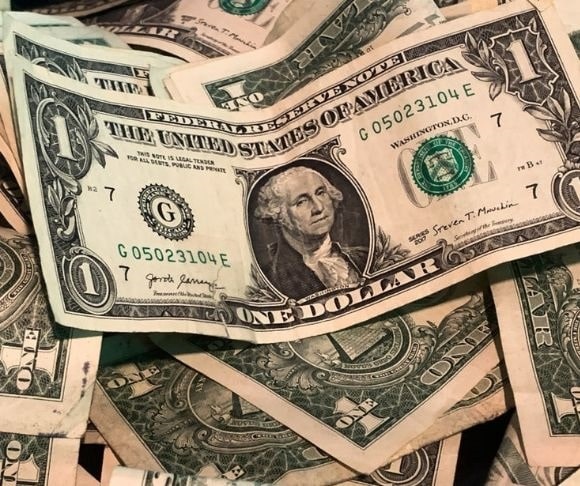Where will you be in 40 years? For potentially thousands of investors, the hope is that they will be cashing in some bonds in 2040 that will generate a 2% return. The U.S. government is praying that it will still be able to afford to keep its doors open, cover its obligations, and continue to confiscate the wealth of its 300 million citizens. The Treasury Department unveiled a new investment that will be auctioned off sometime in the first half of this year, and it is being marketed as a tool to ensure taxpayers are not given the bill to fund all the debt and deficits pervasive in Washington. For all the justified lamentations the bond market receives, this latest instrument will be incredibly popular. Like every other pecuniary matter in the nation’s capital, the government refuses to address the future and keeps kicking the can down the road. What happens when the U.S. government can no longer fund these Treasurys when they mature? Will the Federal Reserve swoop in and monetize the debt?
 Building a Bond with Investors
Building a Bond with Investors
The U.S. Treasury Department will introduce a new 20-year bond in the coming months. The latest offering from the Treasury will be available to all investors, and the word on Main Street and Wall Street is that there will be strong demand. More details will be made public at the Treasury’s quarterly refunding news conference on February 5.
The United States will join the small handful of countries that have 20-year notes. Australia, China, France, Japan, and the United Kingdom all offer this option. Washington presently sells ten and 30-year notes. It used to sell 20-year bonds between 1981 and 1986, but the Treasury stopped after the debt faced severe liquidity problems, leading to the yields being higher than the 30-year Treasurys.
According to a statement from the Treasury Department, officials had considered proposals for 50- and 100-year bonds, the latest craze in global financial markets. It decided to settle with a 20-year Treasury after gathering feedback from a large number of market participants. Experts say that the government was adamant about 50-year bonds, but investors were successful in persuading officials to settle with notes that will mature by 2040.
“We seek to finance the government at the least possible cost to taxpayers over time and we will continue to evaluate other potential products to meet that need,” Treasury Secretary Steven Mnuchin said in a statement.
The announcement comes soon after the Congressional Budget Office (CBO) released its short-term outlook for the federal budget. The current projections show that the government will post a $1 trillion deficit in this fiscal year, and the budget will remain $1 trillion in the red over the next decade.
Once the news broke, the yield on the two-year was relatively flat, the ten-year climbed to 1.834%, and the 30-year jumped to 2.295%
Yield for Investors
You can expect that the 20-year T-bill will yield a little more than 2%, and the Treasury will likely sell as much as $160 billion a month. The yield curve will potentially offer better value than the other maturities out there, but the gap will narrow once the demand for these notes pick up steam. At the same time, it will slightly curtail the issuance of its 10- and 30-year Treasurys. While the consensus on Wall Street is that this will be a hit among investors, analysts argue that the Treasury should have started auctioning off 20-year notes two years ago.
At face value, this is a decent return for traders in the global bond market. Liberty Nation has reported that there are approximately $15 trillion in negative-yield bonds right now as governments and central banks slip into subzero territory. When you receive 0.001% on a ten-year Japanese debt or 0.21% on a German note, it is safe to say that the U.S. Treasury alternative is a steal.

(Photo by Jakub Porzycki/NurPhoto via Getty Images)
Once you start scratching beneath the surface, you find the myriad issues facing the federal government. The central fact is that Washington has a spending problem, evident by the Treasury expanding its debt options to finance its growing spending needs. It is projected that the government’s borrowing needs will exceed $1.2 trillion in the fiscal year 2022, up from the current $1.09 trillion.
The Treasury is ostensibly considering new ultra-long bond options and inflation-linked debt. With interest rates as low as they are, you would be silly not to experiment with every proposal and lock in these historically low rates now. As a result, the government is adopting unconventional means to get by, instead of tackling the growing debt and deficit. Sure, taxpayers may not be on the hook now, but tomorrow’s generation will, especially if the government cannot pay investors when the notes mature by 2040.
It will only be a matter of time before the Treasury, whether a Republican or a Democrat leads it, will follow the route of Austria, Argentina, and Ireland and proceed to offer ultra-long debt to the public.
Federal Reserve – Hero or Villain?
With the Federal Reserve relaunching quantitative easing, the central bank has been on a bond-buying spree again, reminiscent of the years following the Great Recession. In October, the Fed announced it would buy about $60 billion per month in Treasurys. Last month, the Fed purchased more than $2.6 billion in mortgage-backed securities (MBS). Zero Hedge has published incredible analyses highlighting the Fed’s clandestine multi-billion-dollar operation to purchase T-bills. Will the Fed be a major buyer of the Treasury’s 20-year notes, too? Auction Day will be fascinating to monitor.
The Morality of Bonds
Fiscal conservatives and libertarians present the argument that bonds are the personification of immorality, citing the proposal of forcing unborn children to bear the burden of trillion-dollar deficits. It is comparable to parents taking out a loan on behalf of their future child. The people of today will not pay the price for tomorrow as this generation swims in the decadence and excess of deficit-financed spending and Fed bailouts. Every new piece of spending is a tax because it needs to be paid for somehow – tax, borrow, or inflate. And it will not be the 55-year-old insurance salesman who suffers the consequences of the state’s borrowing blitzkrieg – it will be the offspring of Generation Z.
~
Read more from Andrew Moran.




